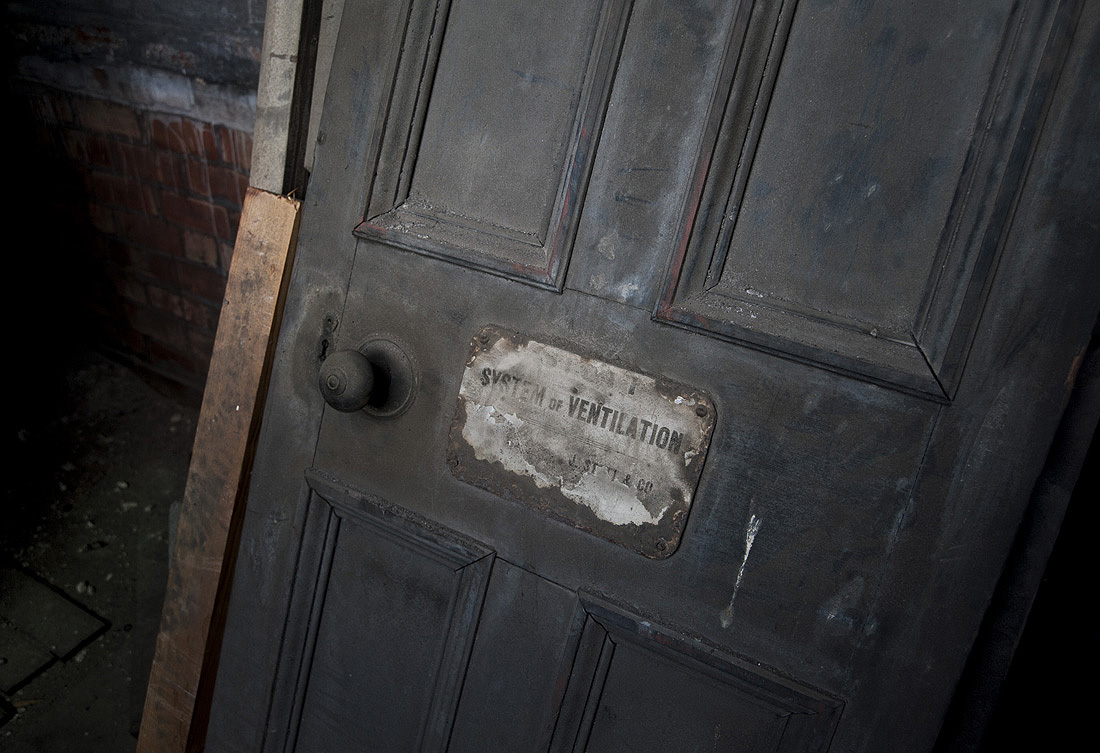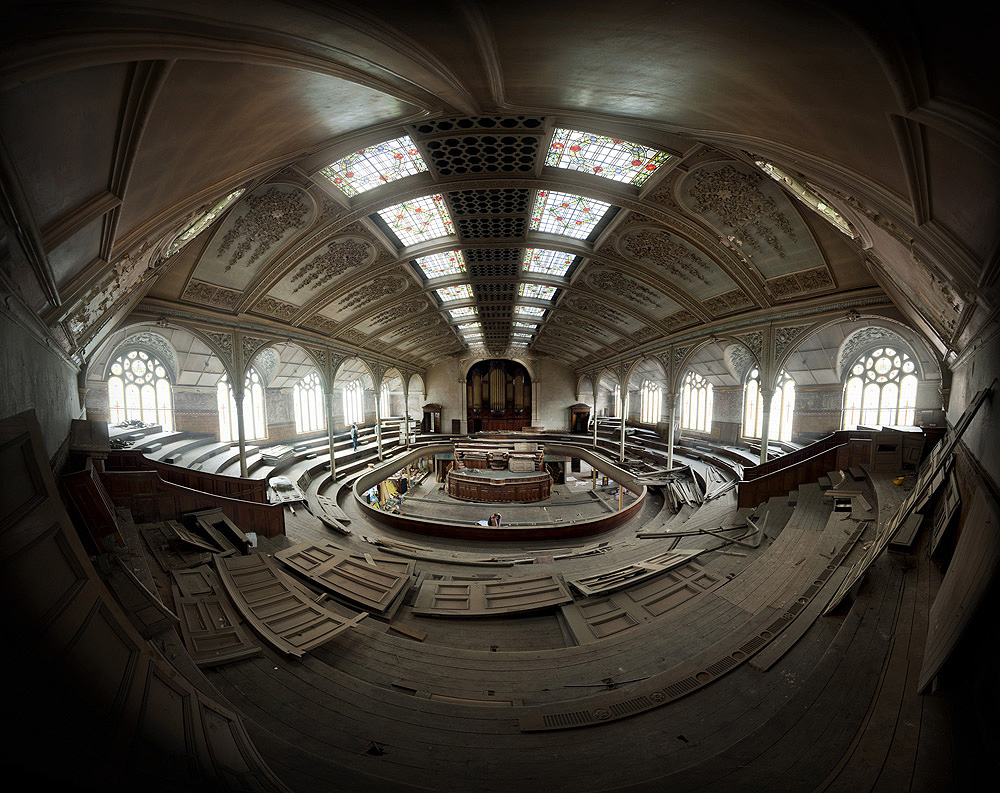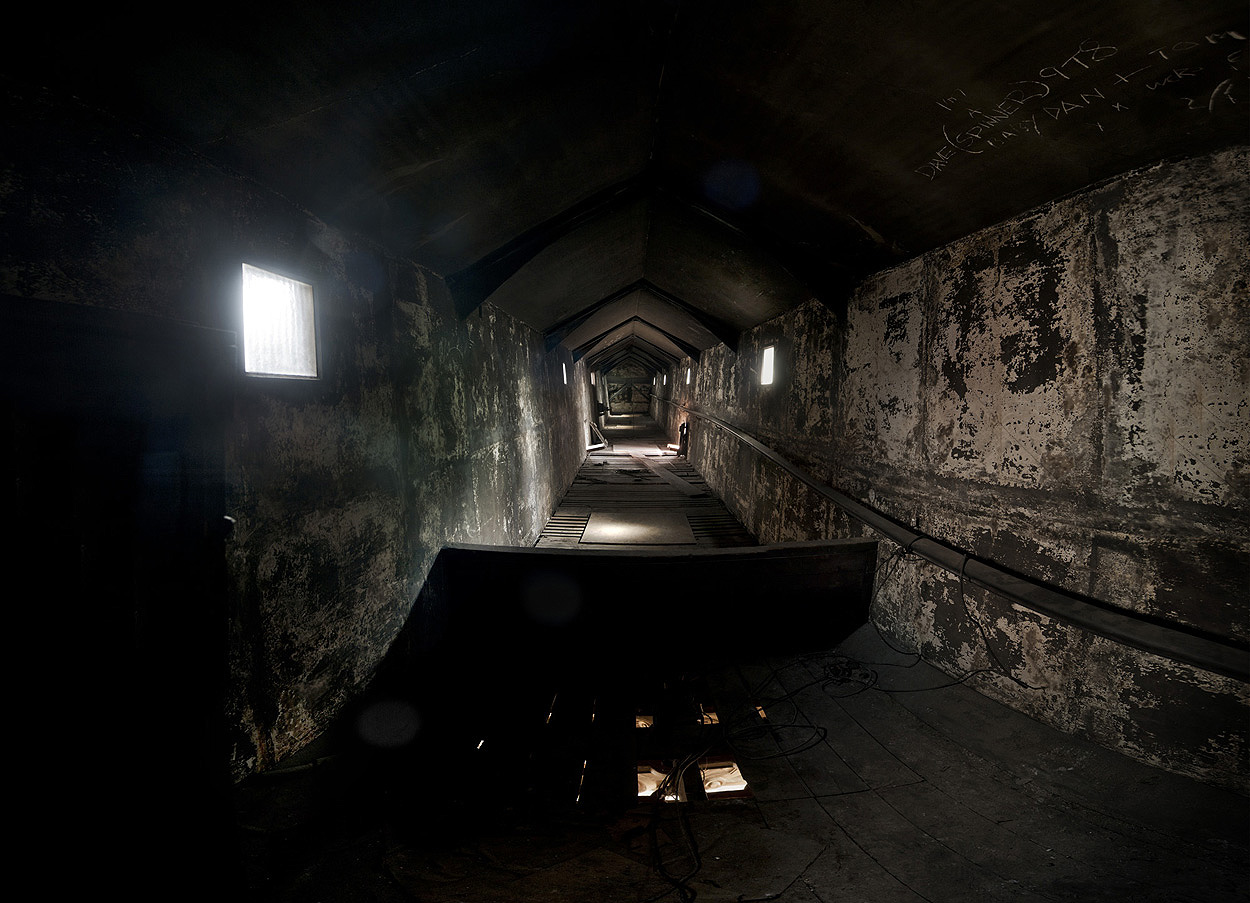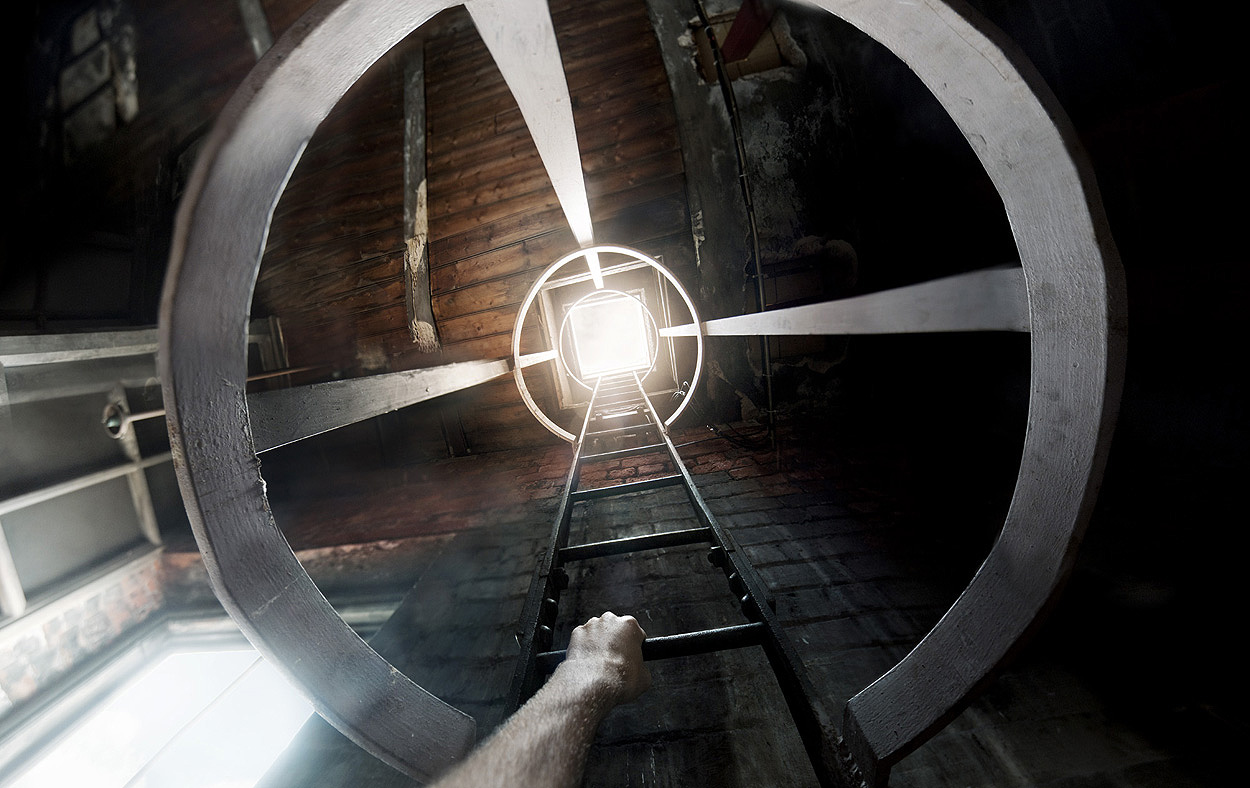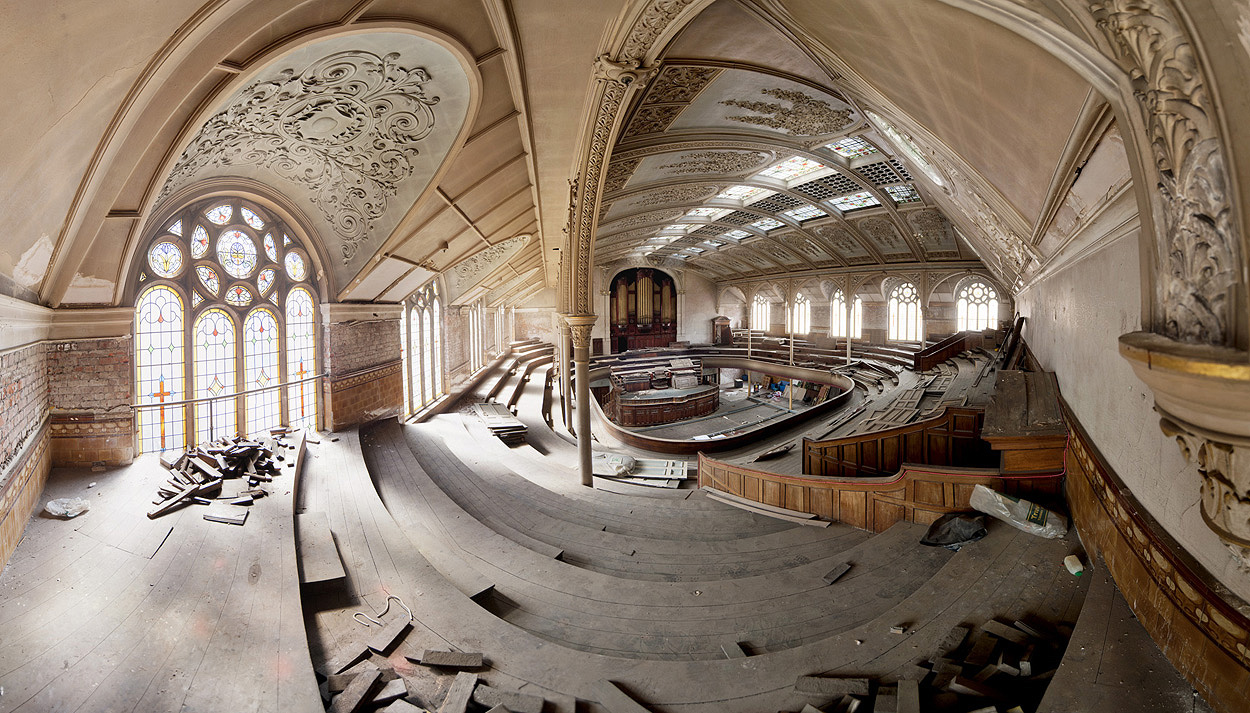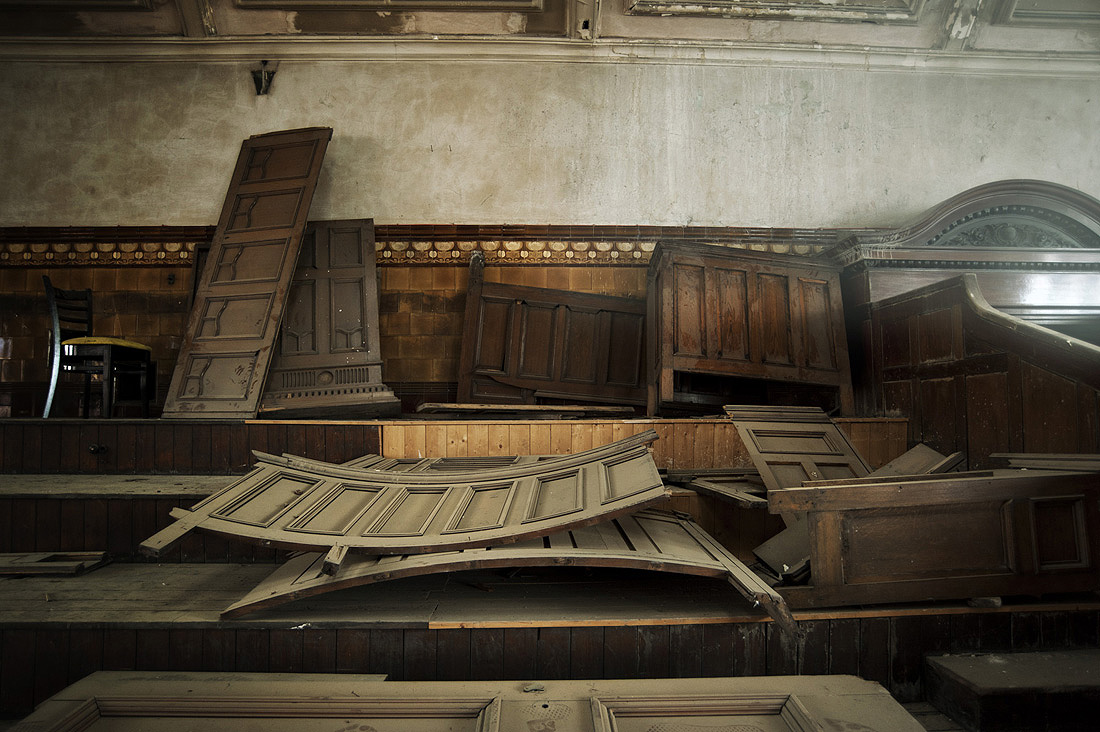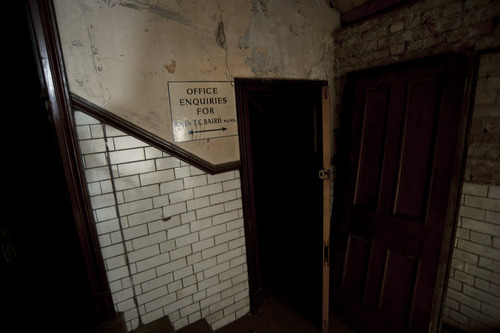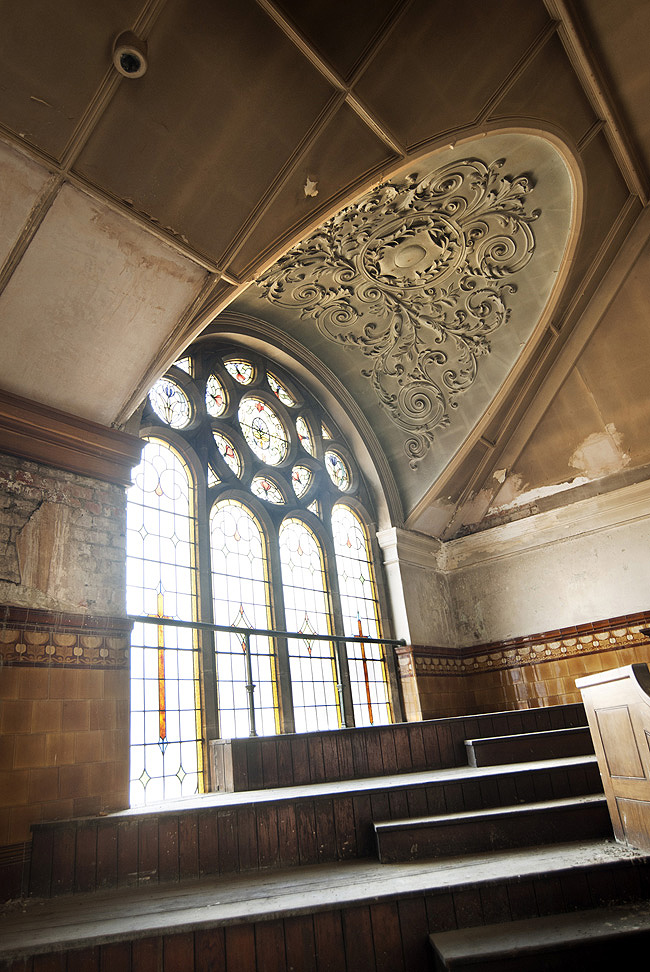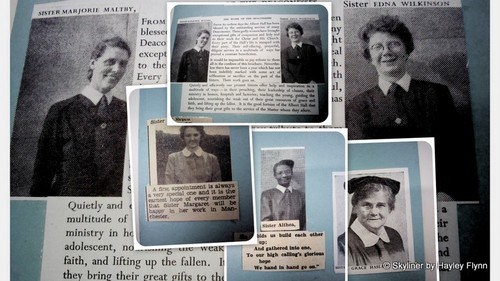AS IT LAY ABANDONED
WRITTEN BY Hayley Flynn
IMAGES BY Andrew Brooks
READING TIME: 8 minutes
Inside the Albert Hall before redevelopment
The Albert Hall and Aston Institute, built in 1910 by W J Morley, was home to the Manchester and Salford Wesleyan Mission, though today it stands empty awaiting renovation.
The ground floor was occupied as Brannigan’s bar for several years and many people have passed through these doors but did they realise just how ornate the building is, did they know about the organ one floor above that’s big enough for a dozen people to climb inside?
The building is vast, spread over four huge floors with the basement originally set aside for social work (including a Club room for boys, a reading room, Girls’ club room, Sisters’ Office as well kitchens and a scullery). The Ground Floor was the Lecture Hall with adjoining library and classrooms but today it is the empty Brannigan’s lounge that occupies this floor. Above, on the first floor is the where the real grandeur can be found; the main hall that seats 2,000 is lined with wooden seating in a horseshoe shape, arching, stained glass windows and ornate ceiling, and the choir vestry.
Rooms to the rear of the hall include a few office spaces and one tiny area - a tucked away space that was possibly a projection room, lined with heavy metal panels which slide to reveal letter-box sized peep holes. It’s quite sinister back there, the intention of the holes not really explained with none of them seemingly large enough for a projection, and a pitch black room adjoining in which there are a dozen chairs arranged in a circle facing inwards like a séance.
That’s probably not as dramatic as it sounds given that the venue has been used as a filming location for shows like Most Haunted; the scribbled childlike crucifix left on a pad of paper resting on a chair isn’t as foreboding once you imagine it was at the hands of TV crew.
The century old organ in the hall was maintained (and possibly built) by Rushworth & Dreaper, though the firms records were shredded in a van outside their premises in Liverpool, by a firm engaged for the purpose when they went into liquidation. The archives had been sold to the new tenants, Henry Willis and Sons, also organ manufacturers, who had not instructed this pulping of musical history.
The organ is large, a door below the pipes leads to a ladder upwards and during our visit, three of us scaled the organ together - there was room for more of us as we balanced ourselves inside the mechanics and peeked out into the main hall that’s been out of use for 60 years.
The building is naturally very warm, though there are some cold spots (where Reverend Collier supposedly haunts us as a punishment for the buildings immoral usage) and it was ventilated by a Plenum System. This method is basically the opposite of a vacuum and requires the pressure in the building to be a little higher than average atmospheric pressure. A Plenum chamber also acts as an acoustic silencer and it can be used in place of bellows in an organ. Now, with no ventilation active, the air is heavy and hot making large areas of the building uncomfortable to be in.
There’s evidence of the former residents everywhere throughout the building, something that appears haunting in a side room - a dusty wig for instance, is less so when you realise it’s the legacy of a Brannigan’s fancy dress competition rather than a century-old personal item of the Reverend Collier.
There’s another floor still to explore above the hall, many of the rooms along the way to it are stuffed with Christmas decorations, bunny ears, and promotional posters for beer and football screenings. As you ascend the staircase to the top of the building there’s an old coat sign still etched on to crumbling paintwork, next to which is a narrow ladder attached to the wall.
Once you climb the ladder you emerge in a loft space, right behind the stained glass Albert Hall sign in the corner tower that’s visible from Deansgate and Peter Street.
At the rear of the tower is a long, dark gallery, like an underground tunnel and another bolted ladder leads further upwards to a white panel about the size of a manhole cover that screams to be pushed at - a few shoves later and you’re on the roof, and what a view…
The building was inspired by Santa Maria della Spina in Pisa, though it’s by no means evident on the face of things. The exterior is of polished granite and brown Bermantofts terracotta tiles, similar to that on the facade of London Road Fire Station. There seem to be six main staircases in all, all grand and vast in size - in fact they’re so large that it doesn’t seem feasible when navigating them that there are so many - the building, in the decay and dim light is maze-like.
The hall was built to house a growing congregation once it was clear that the headquarters on Oldham Street weren’t sufficient. Around the time of erection there were up to 100 halls across the UK. Today just 16 remain in use.
The location was chosen during a time of encouraged temperance, something the Methodist church supported, and so it set up home in the part of town most in need of saving. In one article Reverend Collier, who is said to haunt the premises, states:
There are ten places of amusement, nine of which are theatres and music-halls, seating nearly 25,000 people, and bringing great crowds - perhaps the largest in the city. There are 22 licensed places in the immediate vicinity. In no crowd in Manchester is there to be found more men, women and young people to whom an appeal ought to be made in the name of Christ.
Twenty-five years later the hall was going strong and the number of licensed premises had dropped, the church was confident that this trend would continue, with no inkling that in fact it would do quite the opposite and the temperance centres and even the hall itself would become nightclubs and bars.
The premises cost £55,000 with £25,000 of which being donated by the late Edward Aston, after whom the hall was named (though that part of the title has now been dropped). A single golden key was made and was presented to Mrs Aston on the day of opening across, during the ceremony she prayed that the hall, in what was coined the pleasure seekers’ resort of the city; “may be the Gate of Heaven to tens of thousands”.
When war broke out in 1939 and the Halle orchestra’s home at the Free Trade Hall was bombed they found their new home in the hall temporarily - the congregation had themselves gathered in the Free Trade Hall for 21 years before establishing their premises so there’s a tie between the two venues that dates back to their respective origins.
The location was prominent and certainly in the firing line during the war but it managed to survive the Blitz unscathed. In an article in The Spirit of Manchester, 8 February 1941, a story was published which describes the service on the evening of the Blitz: “we were advised to take shelter elsewhere in case the fires which were raging all around claimed our beloved Hall also”.
Archive floor plans
Former worker from the archives
The congregation crossed the street to their nearest shelter, which would have been the underground Manchester and Salford Junction Canal below the Great Northern warehouses on Deansgate.
The canal bed and tollpaths still exist today, and was built in 1839 as an alternative connection between the Irwell and the Rochdale Canal so that the high tolls could be avoided. The canal turned out to something of a waste of money when the tolls at the Bridgewater Canal were reduced, and was closed in 1922, reopening during the war for use as shelters. The lock at Bridgewater Hall is the only evidence of the canal, but is filled with water today purely for ornamental reasons.
Whilst in the shelters the congregation continued their service: “Nearly all the choir and almost a hundred others were there, and in a little while the great shelter was echoing with the sound of carols. Later someone asked us to pray, a request with which Mr. Johnson (minister) complied immediately. At times we could hear the roar of guns and the thud of bombs from the nightmare world above, but we sang on until we were too tired to produce another note.”
The church wasn’t disapproving of entertainment, they were big believers in providing affordable social activities to the people so that they could escape the monotony of life, and during their peak they would fill the hall every Saturday night for cheap concerts and films, peppered with prayers here and there.
In fact, knowing that their entertainment facilities would be key to their success, the missions made sure their premises didn’t resemble churches, but instead mirrored their competitors in design.
The hall was closed in July 1969, 9 years after the sudden death of Reverend Collier. A farewell service at the hall then led by the Albert Hall brass band we all and the congregation processed across town to the Central Hall headquarters on Oldham Street.
Albert Hall on Peter Street is due to reopen briefly in July 2013 for Manchester International Festival then will reopen with general access during mid to late 2014, as a restaurant and bar, as part of the ever growing Trof empire. The organ is currently being restored by Jardine Organs.
Andrew Brooks is a photographer, a digital artist and a film maker living in Manchester, his previous works include the Secret Cities exhibitions with Curated Place Please visit his site to see these images and more, in high resolution and in all their glory - exactly as they should be viewed.
Thanks to Trof and Manchester Wire for facilitating this visit. The lovely people at Curated Place also joined us and you can see some behind the scenes images on their site.



